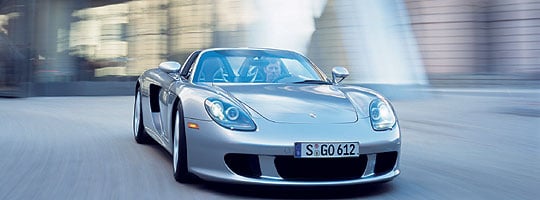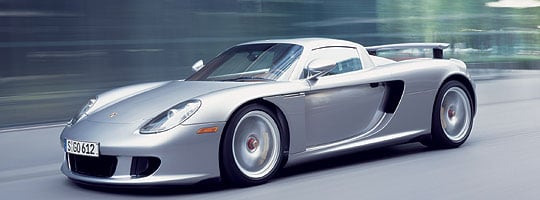
Stuttgart. The new Porsche Carrera GT does not hit the streets of the United States until December, yet this high-performance sports car is already winning prizes in the USA. In its ‘Best of What’s New’ awards, the magazine ‘Popular Science’ has given the 450 kW (612 bhp), 330 kph Porsche the ‘Grand Prize’ in the ‘Cars’ category.
Critical acclaim as best innovation of the year went to the chassis of this supercar, which is powered by a 5.7 litre ten-cylinder engine that accelerates it to 200 kph in just 9.9 seconds. For the first time ever, either in a production vehicle or racing car, both the Carerra’s monocoque and engine carrier are made of carbon-fibre reinforced plastic (CFRP).

The drive-unit is tied to the chassis via the firmly bolted engine carrier. These two structural components form a combined structure with great torsional and flexural strength, supporting the suspension and absorbing any energy from the crumple zones. Thanks in part to this pioneering, patent-pending solution, the Carrera GT brings together in a vehicle weighing just 1,380 kilograms the highest standards of passive safety with the dynamic drive characteristics of a racing car.
Like the chassis, the body is also made of carbon fibre, as is the floorpan that produces extra thrust for Porsche’s new supercar. The carbon skin conceals numerous groundbreaking technical solutions in automotive construction. The Carrera GT is, for instance, the first vehicle anywhere in the world to be fitted with a ceramic clutch system. Due to its very compact dimensions, this system permits both engine and transmission to have a very low centre of gravity and is significantly more durable than conventional clutches.
Another global first comes in the shape of the extremely compact, lightweight and smooth six-gear transmission, with precisely mounted ball-bearing Flexball shift cables. The Carrera GT is the first production car in the world to run on forged magnesium wheels, saving 25 percent in weight compared to aluminium alloys and featuring outstanding durability. The Porsche ceramic composite brake discs also weigh only half as much as steel discs. More than this, even in Porsche’s most powerful sports car, they set new standards in terms of deceleration, response behaviour and service life.
“We award the ‘Best of What’s New’ prize after a full year of testing and evaluating a wide range of products and solutions”, explained Scott Mowbray, Editor-in-Chief at ‘Popular Science’ magazine. “All of these innovations change our daily life – both our working life and our leisure time.”
‘Popular Science’ reports on innovative technologies and their practical impact. With circulation of around 1.4 million, it is one of the USA’s most widely read technical magazines.
Text & Photos: Porsche Presse


